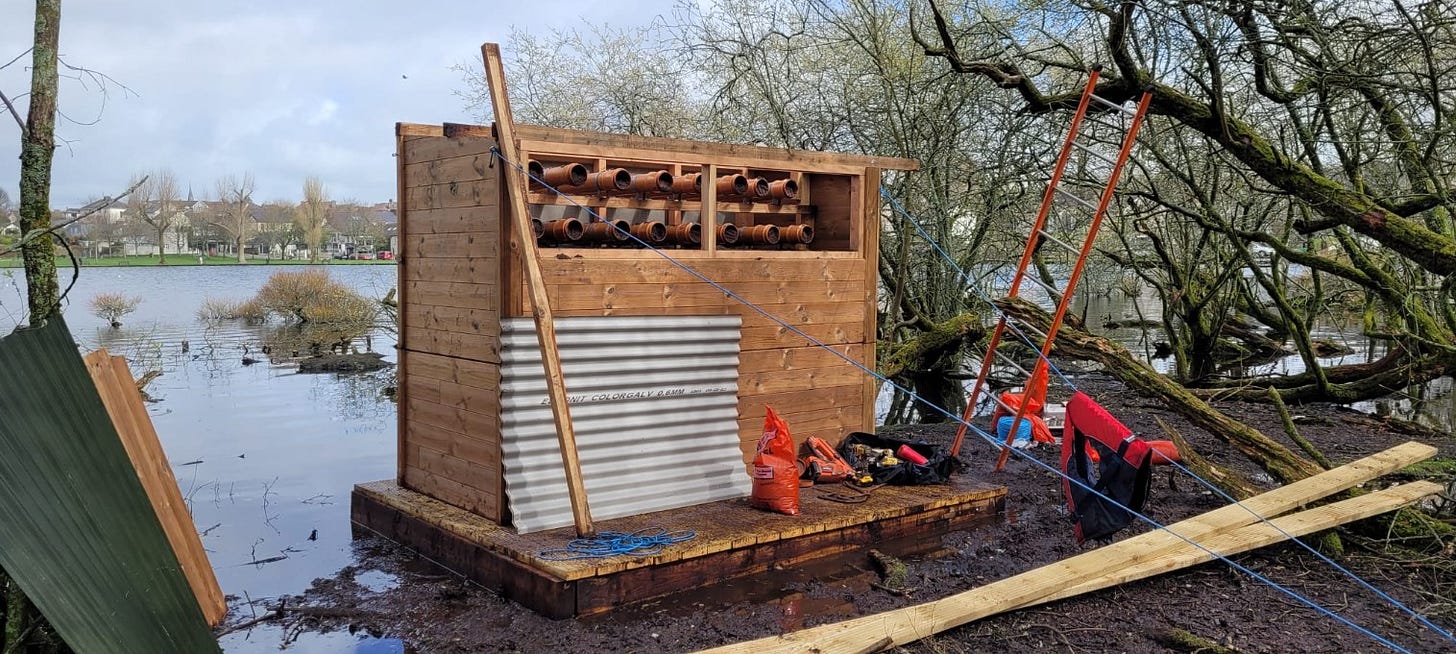A unique house goes up on the island in The Lough
Green Spaces for Health and a small, committed team are hoping that 'if they build it, they will come' with the new sand martin 'house' recently erected in The Lough.
A few minutes into our walk around the perimeter of The Lough skirting alongside the Lough Road, Noel Linehan paused and pointed into the gray sky hanging over the city.
“There,” he said, “they look like sand martins.”
I followed the direction to which he was pointing, where a few small birds were soaring, diving, darting, and swooping.
Noel, a bird surveyor originally from Ballyphehane, can identify birds in the same way you or I might identify a family member from a distance based on their walk.
Noel teased that the birds, which had flown up from West Africa and look a lot like swallows to the untrained eye, may have sensed what was taking place below them on the swampy island that anchors The Lough
For the past few weeks a team which includes Green Spaces for Health, bird experts, volunteers from Glounthane Men’s Shed as well as David Byrne, a carpenter with Cork City Council’s parks division, and Pat Carroll a caretaker at the Lough have been busy building and installing a house designed just for sand martins.
On the day Tripe + Drisheen visited the house was nearly built; David still needed to put the roof on and plaster the outer walls.
Pat Carroll, The Lough caretaker who rowed us across the short distance, joked that more people have climbed Mt. Everest than have set foot on the swampy island which is home to willow trees, ducks, geese, coots and wood pigeons.
After surveying the island, it was decided that the best location for the hide would be on the opposite side of the island from where the crib is currently located.
As Noel explained, placing it on the north-facing side of the island would make it less likely for the sun to force chicks out of the hide, where predators such as rats or magpies could snap them up.
An audio lure, designed to attract sand martins by "calling" them, will be installed inside the sand martin hide once it is completed. Once inside it’s hoped that nesting pairs will mate and produce new generations of sand martins from their colony in The Lough.



How will they know it’s their house?
There is precedent for artificial colonies of sand martins in Cork. At Haper’s Island Wetland, in Glounthane, dozens of sand martins nested in the artificial sand bank installed there in 2022.
When Noel visited last year he remembers seeing rows of baby chicks looking out of the tunnels, eagerly awaiting parents to return with mouthfuls of insects.
That’s what they’ll be hoping for at The Lough also.
Noel is confident that the migratory bird will take up residency. As he explained, they come to the Lough because there is a food source which in turn increases their chances of finding the hide, which is also known as a wall.
The hide, with its round holes cut into it, resembles the holes or crevices where sand martins typically nest, along the city quay walls or banks of rivers.
“The sand martins are here to mate. It’s all about survival for them,” Noel said.
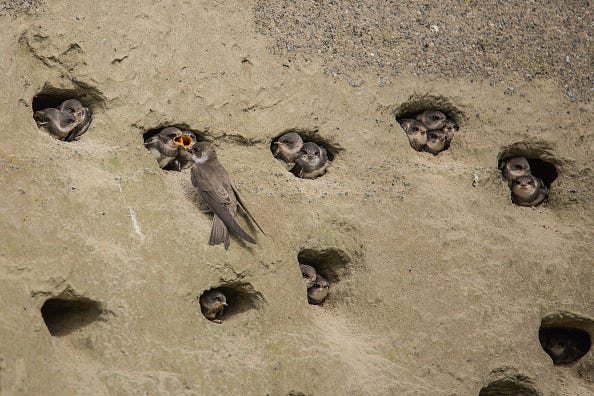
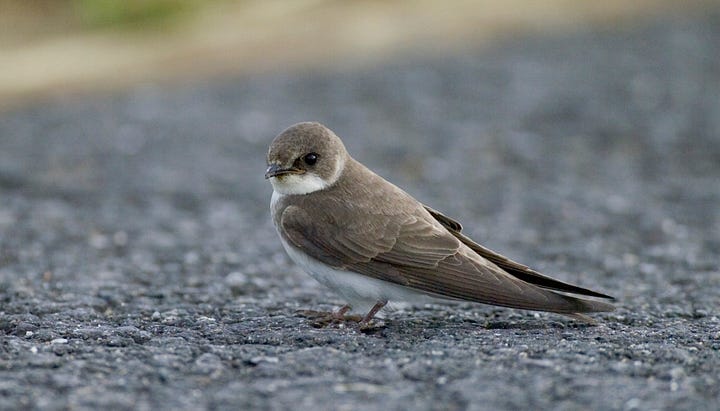
Out on the swampy island, Noel and David, the carpenter from the City Council run their hands along the house while looking through an instruction manual. The hardest part of the construction was securing the base David said.
The house for the sand martins was measured and cut out on dry land, before Pat got the job of rowing the various pieces across. Unlike the marine birds which are everywhere around us, Pat has not taken like a duck to water when it comes to rowing.
We joke that he’s probably not likely to get a call up from the O’Donovan brothers, the Olympic champion rowers from Skibereen, soon. Or ever.

David said seven railway sleepers were embedded on the surface of the boggy island to secure the house. Pipes extrude from the front of the house; they’ll be pushed back flush with the exterior of the house and filled with sand, hence the name sand martins, and the team of builders, helpers and volunteers, will retreat and leave nature take its course.
Noel has been studying birds since he was 13 and has traveled all over the world to observe various species, such as albatrosses, terns, owls, and more. He recalls the heady days of when Tramore Valley Park was a landfill site and home to 15 different types of gulls. There were several owl species to Noel said.
Surveying the hide on the swampy island in The Lough, Noel’s excitement was clear. He’s also impressed by the speed of the project from conception though to build which all happened in just a few months.
On our walk around The Lough, Noel explained that the sand martin is a common visitor to Ireland, typically arriving in March and staying right through the summer up until around October. Slightly smaller than the swallow, wetlands, ponds and lakes such as The Lough or the Atlantic Pond are ideal nesting locations for the sociable bird.
“It’s going to be fantastic,” Noel said, inspecting the house, adding that it will give people in Cork an opportunity to learn more about the migratory visitor.
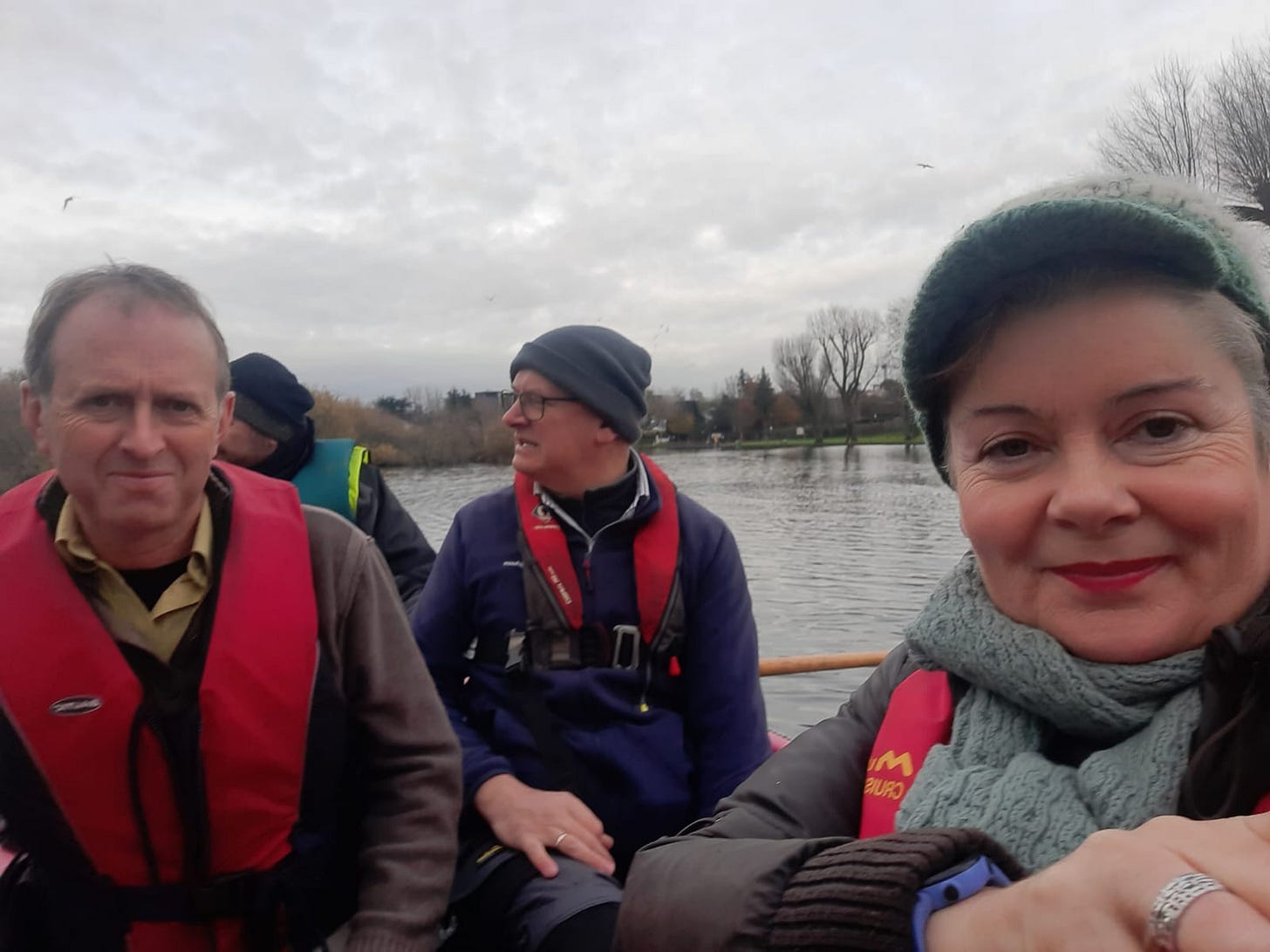
A bird-friendly city
The idea for a sand martin hide for The Lough came about late last year when Maria Young, a coordinatior with Green Spaces for Health was on a whirlwind tour of the city’s community gardens with Noel Linehan. The pair connected following a bird-related article in The Irish Examiner.
“As we were passing The Lough, Noel said, ‘that might be a spot for the sand martins,’” Maria recalled.
“It really captured my imagination and I thought let’s go for it,” Maria told Tripe + Drisheen.
After Noel explained to Maria about the sand martin hide in Harper’s Island, Maria, not known for hanging around, set the wheels in motion and co-ordinated with the City Council’s biodiversity officer Rosemarie McDonald, Catherine Seale, a community water officer from the Local Waters Authority and Glounthane Men’s Shed to get the house built. She secured funding from a few different sources. All told the project cost around €2,400.
Both Maria and Noel hope that once the sand martins take up residence in their new 'house', they'll inspire visitors to The Lough to learn more about the birds, their habitats and habits, and the mammoth journey that takes them across the Mediterranean, up through Spain and the Pyrenees, across France, and up to the English Channel. There, they diverge and head towards their separate destinations in Ireland and Britain.
Some house martins have been recorded flying distances of over 500km in a single day.
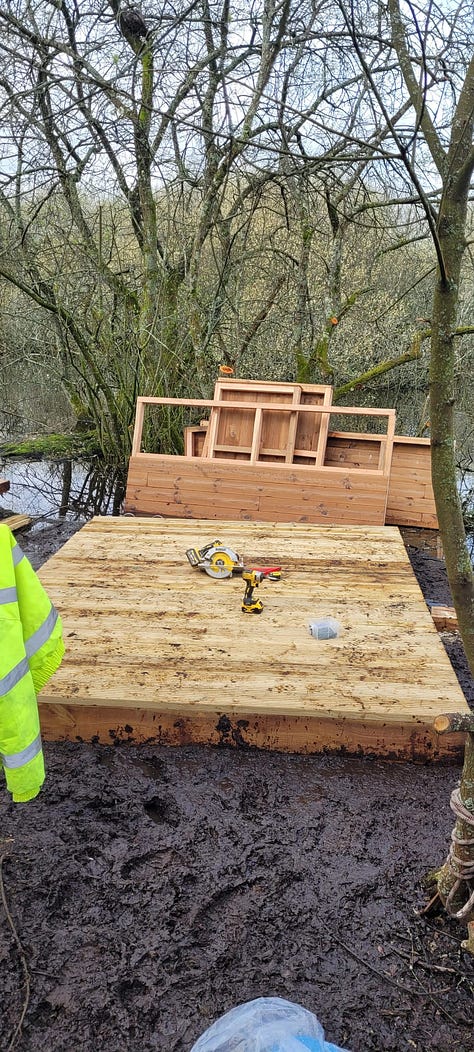





Once the house is built and open for business, Maria said that the next step will be to get the community involved. The first stop Green Spaces for Health is the primary schools around The Lough. Maria has applied for funding to get kit such as binoculars, and Noel will be on hand to help students identify the birds and answer their questions.
According to Maria, the sand martin house brought together a disparate team which she hopes will join forces soon again, perhaps to build a sand martin hide in the Atlantic Pond.
Noel thinks the new addition to The Lough could pave the way for more bird houses around the city.
“The Lough gets a lot of footfall and so it's an opportunity to advertise the birds and the artificial wall.
As Noel said “lots of institutions, businesses and organisations could put a sand martin wall in a small unused or undisturbed plot in their property.”
No doubt too that word will get out to the team of ornithologists just up the road from The Lough in UCC. Perhaps they might even look up in the summer sky and see a sand martin glide on the evening wind and follow it down to its new home in The Lough.
For more information about the sand martin, visit Bird Watch Ireland’s page here and to learn more about Green Spaces for Health you can visit their webiste here.




